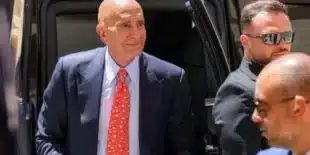As Iran threatens to respond to the suspected Israeli assassination of Hamas leader Ismail Haniyeh in Tehran, the various militias that Iran has armed over the years could play a significant role in any potential retaliatory actions.
The Origin of Iran’s Proxy Strategy
Iran’s strategy of arming militias dates back to the aftermath of the 1979 Islamic Revolution. Before the revolution, the U.S. provided advanced weapon systems to Iran’s Shah Mohammad Reza Pahlavi. However, after the revolution and the subsequent U.S. Embassy hostage crisis, these shipments and maintenance programs ceased. The Iran-Iraq War in the 1980s further depleted Iran’s arsenal. International sanctions, especially over Iran’s nuclear program, have also restricted its ability to acquire new weapons, while U.S. allies in the region have continued to receive advanced arms. Unable to match these sophisticated weapons directly, Iran has relied on militias as an asymmetric threat to pressure both Israel and the United States.
Iran’s Regional Allies
Iran’s arming of militias began in earnest in the 1980s with Shiite forces in Lebanon fighting against Israel, eventually forming Hezbollah. This support expanded after the 2003 U.S.-led invasion of Iraq, which overthrew Saddam Hussein, a longtime adversary of Tehran. Iran has also supported Syrian President Bashar Assad during his country’s prolonged conflict and has armed various Sunni militants, positioning itself as a defender of Shiite Muslims worldwide. These relationships are primarily managed by Iran’s paramilitary Revolutionary Guard.
Key Militias in Iran’s “Axis of Resistance”
Iraqi Militias
In Iraq, Iran supports several forces that mobilized in 2014 to fight the Islamic State group. These mainly Shiite militias, known as the Popular Mobilization Forces, have grown into a significant political faction, equipped with rockets, drones, and other weaponry. They number around 180,000 fighters, according to the International Institute for Strategic Studies.
Lebanon’s Hezbollah
Formed in 1982 during Israel’s occupation of southern Lebanon, Hezbollah is a major force with an estimated 150,000 rockets and missiles, including precision-guided ones. It also possesses drones and surface-to-air missile systems and is known for its battle-hardened fighters who have supported Assad in Syria. Hezbollah’s leader, Sayyed Hassan Nasrallah, claims the group has 100,000 trained fighters.
Palestinian Militants
Despite being Sunni, Hamas and Islamic Jihad have received weapons and other support from Iran. However, these groups have been severely affected by Israel’s military actions since the Oct. 7 Hamas attack that initiated the current conflict.
Yemen’s Houthi Rebels
The Houthis have controlled Yemen’s capital, Sanaa, since 2014 and, with Iran’s support, can now launch drone and missile attacks disrupting Red Sea shipping and even reaching Israel. The U.S. Navy has been actively countering these attacks, which have raised the Houthis’ profile internationally.
Potential Retaliatory Strikes
Following an Israeli attack on the Iranian Embassy compound in Syria in April, Iran launched a significant assault involving drones, cruise missiles, and ballistic missiles towards Israel. A similar response could occur now, potentially involving Hezbollah, which might retaliate for the recent killing of its senior commander Fouad Shukur. Such an attack could overwhelm Israeli air defenses, increasing the risk of casualties and potentially leading to a broader regional conflict.
In summary, Iran’s long-standing policy of arming and supporting regional militias has created a network of proxy forces capable of significant military action. Any retaliatory measures by Iran could involve these groups, posing a substantial threat to regional stability and escalating tensions further.


